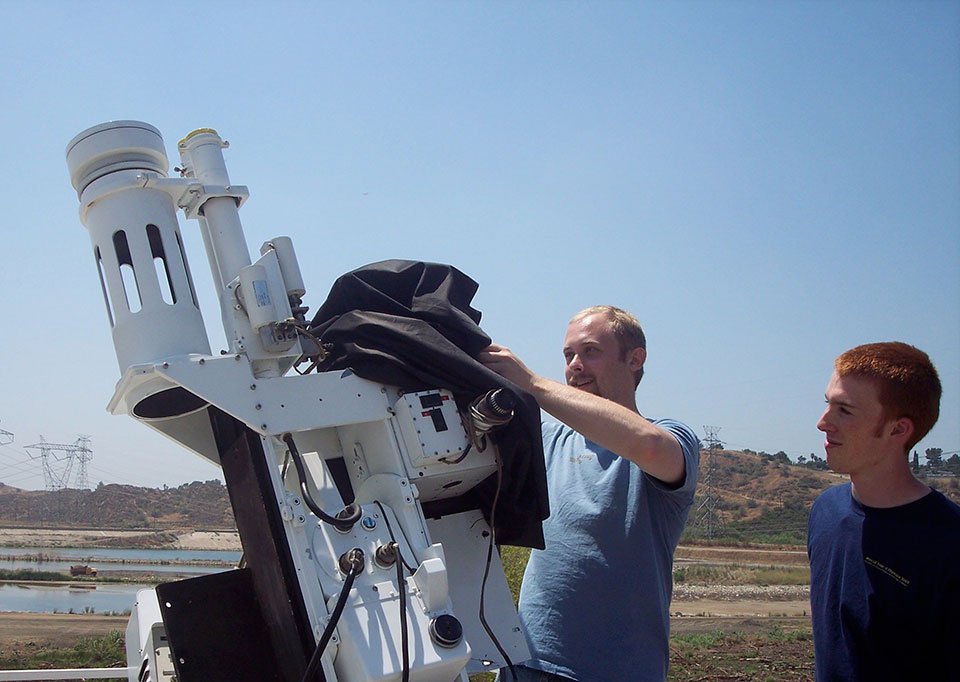San Fernando Observatory Finds New Home at CSUN
When the Aerospace Corporation looked for a place to build a solar observatory in the 1960s for their work with space radiation, they needed to find somewhere where an unstable atmosphere wouldn’t impede their work. They chose the San Fernando Valley — a place where the air is so stable, it leads to the area’s smog problem — to build the San Fernando Observatory (SFO) in the area between Van Nuys and Santa Clarita in 1969.
The observatory is now being moved to the California State University, Northridge campus, where students and faculty will find it easier to access the facility to monitor the sun’s radiation as it nourishes the earth.
CSUN was given the rights to the observatory following the 1971 Sylmar earthquake because costs for repairs and maintenance of the facility were too much for Aerospace. Though located on Los Angeles Department of Water and Power land, the university and LADWP reached an agreement that allowed students and faculty to access the facility.
However, budgetary and post-9/11 concerns prompted a mutual decision to move the observatory. It will be rebuilt in CSUN’s southeast corner near the university’s orange grove. The move is expected to help bolster the school’s already strong astronomy bonifides by giving Matadors the quick access to work with the SFO telescope and data.
“The biggest plus of moving the observatory to campus is that it will give easy access to the student for participation on observational solar research,” said Debi Choudhary, physics and astronomy department faculty member and associate director of the San Fernando Observatory.
He noted the discoveries the current team of researchers, and several others before them, made in the area of solar physics thanks to being able to access the SFO.
“[For example], the 26 years of continuous observations … of the sun that helps in understanding the source of time variability in solar radiance,” Choudhary said. “Since solar radiance governs the earth’s climate, long-term earth climate study would benefit from this data.”
As for its new location, university officials said the area made perfect sense since it was close to the Donald E. Bianchi Planetarium and its stellar observatory.
“The orange grove location already has the stellar [night] observatory and is relatively free of physical obstructions such as buildings that could obstruct solar observation,” said Bill Fairchild, capital program manager in CSUN’s facilities planning department.
“The difference between the solar and stellar (or lunar) telescopes,” Choudhary said, “is that since the sun produces more light compared to the stars, special care is taken to avoid the heating of the telescope. Also, since there is ground heating due to the presence of the sun — unlike in the night time — care is taken to avoid ground turbulence.”
The construction of the site is currently undergoing an agency and consultant plan check and review. Work should begin in mid-January, with the opening scheduled for October 2015.
Even before the new foundation is set, Choudhary said the facility is already getting recognition. The National Science Foundation has awarded CSUN a grant to build the telescope — or “modern instrument” — which will make it possible to continue the work already underway.


 experience
experience